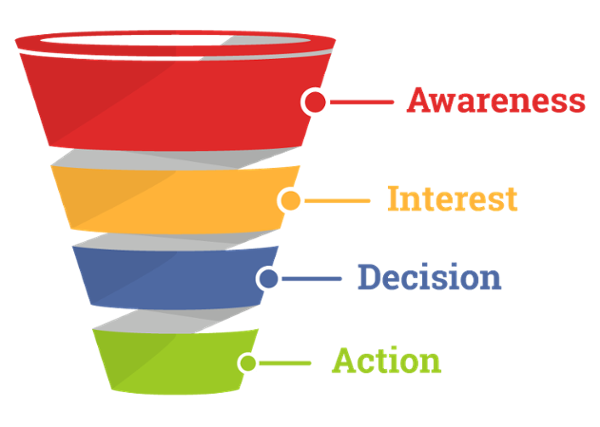Retargeting campaigns are an effective form of digital strategy which has the potential to turn prospective customers into paying customers through the use of specific ads based on their behaviour online.
If you’ve never run a retargeting campaign before, do read our blog How can a retargeting campaign benefit your business?, to learn more about how these ads works.
To sum it up – retargeting is advertising to people who have already visited your website. As per research, over 90% of first time web visitors leave without making a purchase or signing up. They also typically get busy and may forget your brand and end up buying elsewhere. Hence, retarget advertising is a great way of being front of mind to these people and bringing them back to your website.
Whether you’ve just started testing campaigns or you’re a seasoned ad expert, here are some easy tips to help take your campaigns to another next level.
Understand the buyer journey
Understanding the buyer journey is an important part of any business and is particularly important when it comes to retargeting campaigns. Similar to the marketing funnel, the buyer’s journey begins with a cluster of customers at the top of the funnel in the awareness stage and ends up at the bottom with fewer people in the conversion stage.

Retargeting campaigns are designed to capture more consumers as they pass through the funnel, but they are only effective if you understand who you want to see the ads and when. If there’s one thing all marketers agree on, it’s that you must have a detailed understanding of customer data and the effectiveness of marketing initiatives. That means understanding what’s successful and what’s not. Which customers are converting on which channel? Which ads are working best for revenue?
Improve your audience targeting
If you’re targeting everyone with your advertising, then you’re doing it wrong. People will visit your website for different reasons. When a prospective customer visits a particular web page, they are displaying different buyer intents. It’s possible that they aren’t even planning to buy your product, but simply comparing it to a competitor product. The key with retargeting ads is to match your ads with your audiences’ intent.

Online Advertising & Support
Save valuable time and money with a complete online marketing plan, created and managed by experts so you can focus on achieving your business goals.
For example – If your business is running a catering service and someone visits your website page about your evening buffet service for summer weddings, you want to segment that group into a custom audience titled like “summer wedding” or “evening buffet” If you want it broken down even further then segment groups for “evening wedding in Sydney”.
To improve your advertising, create various audiences based on what your visitors are interested in. You can also create retargeting ads for social media channels, so depending on which channels your target audience is active on, test out a few ads on these channels.

Watch the frequency of your retargeting ads
Ad frequency is often overlooked when running campaigns, but it is something that we should be thinking about in terms of improving the overall performance. High frequency can have a negative impact on buyers. It can be seen as annoying, invasive, and even worse – it cause prospective customers to associate irritation with your brand.
When you’re setting up your campaigns, make sure to set an advertising frequency limit of about 2 per day. If your audience sees an ad more than twice, either turn it off after a few days (giving them a break from the ad) or change the imagery so they have something new to look at.

Experiment until you find the best offer
A retargeted ad should ideally send a visitor to a website page which they previously visited, however, offering incentives in retargeting ads are also a great call-to-action. If you’re not sure what your incentive should be based on, take some time to analyse your traffic. Whether you plan on offering a discount or free resources, first find out what is reaping more traffic? This could be a product, service or even a blog article.
Once you’ve pinpointed a few pages with high traffic – take it a step further by analysing conversion rate for each of them. In simpler terms, what’s the total number of conversions from a specific page compared to the total number of visitors? The higher the conversion rate, the better the incentive.
Don’t ignore the power of emotional advertising
While it would be nice to believe that we all act rationally when we go shopping, the truth of the matter is that emotions play a large role in our shopping decisions. A straightforward list of product features will appeal to the rational mind for some users, but it has no effect on their emotions. Our emotional side doesn’t care about features and ease of use, it wants to see, feel and imagine the benefits it could make in our lives.

Brands like Nike and Coca-Cola are famed for their emotional and heartfelt ads. The Sainsbury Christmas advertisement “Mog’s Kitchen Calamity” features a Christmas-esque story complete with furry pets, snowflakes and a soft-spoken narrator, a perfect example of a brand eliciting strong emotions and connection by utilising the “feel good” Christmas spirit.
It’s important to target both sides of potential customers in your retargeting ads. Speak like a friend, not a sales person. They’ve already shown some interest in your website, now bring them back with a reason that speaks to their heart.
Remarketing can be a valuable tool in your marketing strategy and we hope these tips help you with your next campaigns. If you’re not experienced with retargeting or just need a helping hand, consider consulting a digital specialist to help you incorporate it into your strategy and set you on the right path.

Your first step to building a world-class website starts here.
A trusted brand is priceless for any business. We will help you build a compelling website that is respected in your industry and stands apart from your competition.



